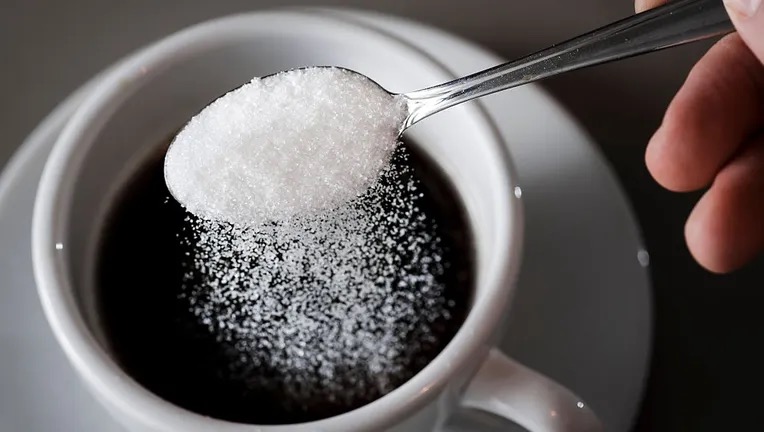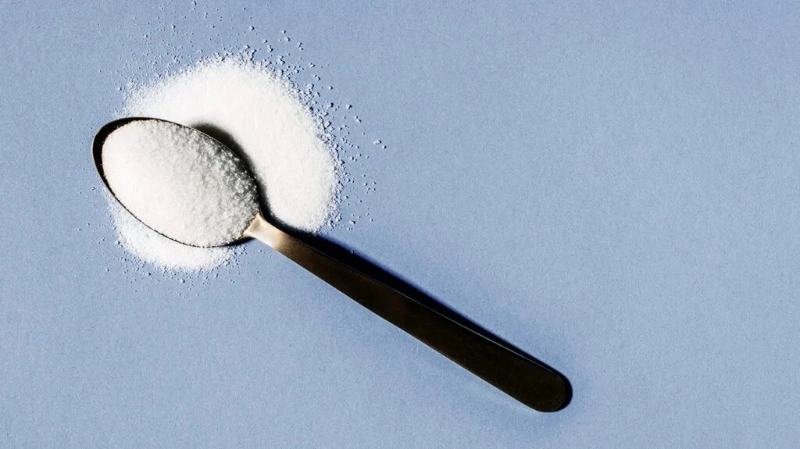







Content Menu
● Regulatory Safety Assessments and Acceptable Daily Intake (ADI)
● How Sucralose Is Metabolized in the Body
● Scientific Evidence on Health Effects
>> Toxicity and Carcinogenicity
>> Metabolic and Immunological Effects
>> Gastrointestinal and Microbiome Considerations
>> Controversies and Emerging Concerns
● Practical Consumption Guidelines
● Summary of Key Points on Sucralose Safety
● Frequently Asked Questions (FAQ)
>> 1. What is the Acceptable Daily Intake (ADI) of sucralose?
>> 2. Is sucralose safe for children and people with diabetes?
>> 3. Can sucralose cause cancer or genetic damage?
>> 4. Does sucralose affect blood sugar or insulin levels?
>> 5. What are the potential effects of sucralose on gut health?
Sucralose is a widely used artificial sweetener found in many foods, beverages, and healthcare products worldwide. Known for being about 600 times sweeter than sugar, sucralose offers intense sweetness without calories, making it popular among consumers and manufacturers alike. However, questions regarding how much sucralose is safe to consume have sparked ongoing scientific research and regulatory reviews. This article delivers a comprehensive review of sucralose safety, including scientific evidence, regulatory standards, metabolism, potential health impacts, and practical consumption guidelines.

Sucralose is a non-nutritive sweetener synthesized by chemically modifying sugar molecules. Specifically, three hydroxyl groups in sugar are replaced by chlorine atoms, which prevents sucralose from being metabolized for energy. This modification allows it to deliver sweetness without contributing calories. Sucralose is incorporated into a wide array of products—from diet sodas and baked goods to chewing gums and medicinal tablets—to reduce sugar content while maintaining palatability.
International regulatory bodies such as the U.S. Food and Drug Administration (FDA), European Food Safety Authority (EFSA), and the World Health Organization (WHO) have thoroughly evaluated sucralose's safety. These agencies have established an Acceptable Daily Intake (ADI) to indicate the maximum amount considered safe to consume every day over a lifetime.
- The ADI for sucralose is set at 15 milligrams per kilogram of body weight per day by both WHO and EFSA.
- For example, for a 70 kg adult, this corresponds to a daily intake of up to 1050 mg of sucralose.
The ADI incorporates a significant margin of safety, derived from extensive toxicology, metabolism, and long-term feeding studies.
Studies reveal that most ingested sucralose is not absorbed or metabolized; it largely passes through the digestive system unchanged. This is a key reason why it contributes no calories. However, a small portion is absorbed but rapidly excreted unchanged in urine. The limited metabolism reduces the likelihood of systemic toxicity.
Some gut bacteria can transform a fraction of sucralose into compounds like sucralose-6-acetate, which has raised additional safety questions, although levels remain tightly controlled in commercial products.

Extensive research over decades affirms the general safety of sucralose within established intake limits, but ongoing studies continue to examine nuanced effects:
- Regulatory authorities have found no conclusive evidence linking sucralose to cancer, genetic mutations, or serious toxicity at approved consumption levels.
- Recent comprehensive reviews reinforce sucralose's non-carcinogenic profile, reassuring consumers about its safety.[7][10]
- Some studies suggest that sucralose consumption may influence insulin secretion and blood glucose levels, with potential implications for diabetes risk.[9]
- There is emerging evidence that high doses of sucralose may modulate immune function by suppressing certain T-cell activities in animal models, pointing to possible impacts on immune response.[5][6]
- Certain experimental data hint at sucralose's ability to alter gut microbiota composition, which could affect metabolism and immunity, though more research is needed before firm conclusions.
- Sucralose may affect gut lining integrity by loosening the tight junctions between intestinal cells, possibly contributing to a "leaky gut" condition associated with inflammation.[4]
- Disruptions in gut microbiota caused by sucralose could have downstream effects on overall health, immune regulation, and metabolic balance.
- A recent study indicated that sucralose metabolites might damage DNA in certain lab tests, raising concerns about possible cancer risks, though these findings have yet to be confirmed in humans.[4]
- The WHO has recommended caution using non-sugar sweeteners for weight control due to insufficient high-quality evidence supporting long-term benefits.
To benefit from sucralose's sweetening properties while minimizing potential risks:
- Adhere to the ADI: Keep daily intake below 15 mg per kg of body weight to remain within safe limits.
- Moderate product use: Since sucralose is pervasive in many diet and sugar-free products, consumers need to monitor cumulative intake.
- Balanced diet approach: Use sucralose as part of a broader healthy eating plan, not as the sole strategy for sugar reduction or weight management.
- Sensitive groups: Individuals with certain health conditions or concerns (like gut disorders) should consult healthcare providers regarding artificial sweetener use.
Manufacturers maintain that sucralose is among the most extensively tested food additives and emphasize rigorous quality control to limit impurities, such as sucralose-6-acetate. The sweetener's profile as calorie-free and highly stable in cooking and processing makes it valuable for food innovation.
| Aspect | Summary |
|---|---|
| Sweetness Level | About 600 times sweeter than sugar |
| Metabolism | Mostly passes unchanged; minimal absorption |
| ADI | 15 mg/kg body weight/day |
| Toxicity and Carcinogenicity | No conclusive evidence of risk at approved levels |
| Metabolic Effects | Some indications of insulin and glucose changes under study |
| Immune System Effects | High doses may suppress certain immune cells (research ongoing) |
| Gut Microbiome Effects | Possible alterations, still under investigation |
| Practical Advice | Use moderately, read labels, part of balanced diet |
Sucralose is recognized by global regulatory authorities as safe for human consumption within established ADI limits. It offers a valuable sugar alternative with zero calories, helpful for blood sugar management and calorie control. However, emerging scientific studies suggest some metabolic, immunological, and gut microbiome effects that warrant further research. Consumers should exercise moderation and view sucralose as one component of an overall healthy lifestyle. Responsible use aligned with regulatory guidelines ensures sucralose remains a beneficial and safe sweetening option.

The ADI for sucralose is 15 mg per kilogram of body weight per day, meaning a 70 kg person can safely consume up to 1050 mg daily.[8][11]
Yes, regulatory bodies such as the FDA confirm sucralose is safe for these groups when consumed within recommended limits.[11]
Current evidence from multiple comprehensive reviews finds no conclusive link between sucralose at approved consumption levels and cancer or mutagenicity. Some new lab studies raise questions but require further confirmation.[10][7]
Research shows sucralose may influence insulin and glucose responses in some individuals, suggesting a potential metabolic impact, though results vary and more research is needed.[9]
Sucralose may alter gut microbiota balance and intestinal barrier function, which could influence inflammation and metabolism, but conclusive human data remains limited.[4][9]
[1](https://pmc.ncbi.nlm.nih.gov/articles/PMC3856475/)
[2](https://pmc.ncbi.nlm.nih.gov/articles/PMC10971371/)
[3](https://www.sciencedirect.com/science/article/pii/S0278691517302818)
[4](https://www.healthline.com/health-news/sucralose-a-common-artificial-sweetener-may-increase-cancer-risk)
[5](https://www.kentscientific.com/blog/new-research-with-mice-reveals-the-dangers-of-sweeteners/)
[6](https://www.nature.com/articles/s41586-023-05801-6)
[7](https://www.frontiersin.org/journals/nutrition/articles/10.3389/fnut.2024.1387646/full)
[8](https://www.fda.gov/food/food-additives-petitions/aspartame-and-other-sweeteners-food)
[9](https://usrtk.org/sweeteners/sucralose-emerging-science-reveals-health-risks/)
[10](https://www.cancer.gov/about-cancer/causes-prevention/risk/diet/artificial-sweeteners-fact-sheet)
[11](https://www.news-medical.net/health/Sucralose-Safety-and-Evidence.aspx)
Top Nutritional Supplement Manufacturers And Suppliers in Indonesia
Top Nutritional Supplement Manufacturers And Suppliers in India
Top Nutritional Supplement Manufacturers And Suppliers in Germany
Top Nutritional Supplement Manufacturers And Suppliers in France
Top Nutritional Supplement Manufacturers And Suppliers in Canada
